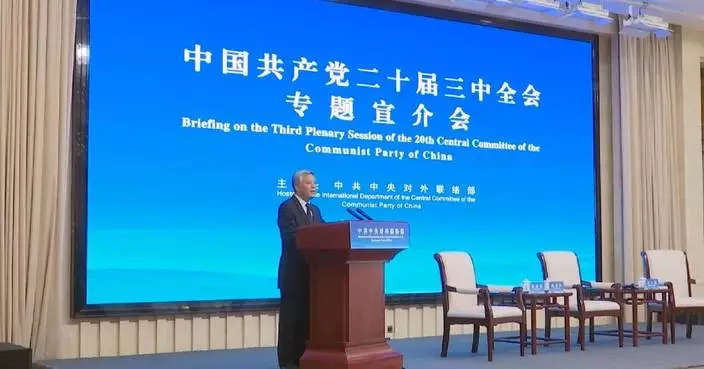The awe-inspiring Zhuke tripod, a 400 kilo bronze behemoth archived at east China's Anhui Province towering at nearly four feet high with an immense 87 centimeters wide, is a staggering feat of ancient metalwork.
The Wuwangdun tomb excavated in Anhui has been confirmed as the largest and highest-level tomb from ancient Chu state (704 BC - 223 BC) dating back to more than 2,200 years, the National Cultural Heritage Administration said on April 16.
Archaeologists focused on excavating the main vertical earth-pit tomb, confirming it as a large structure housing a wooden chambered burial area.
This collection of Anhui Museum is very similar to the large bronze "ding" (tripod) in size and structure, archeological experts said.
The ingenious "sectional casting" method was employed during its casting process more than 2,000 years ago.
Each component was cast separately before being joined, evidenced by the protruding "range lines" along the tripod's belly where the sections united.
Beyond its sheer scale, the Zhuke tripod captivates with its unique form. The curved shoulders give way to a rounded potbelly resting on three sturdy legs, with two handles adorning the sides.
"This type of ding (tripod) is a very distinctive instrument in Chu culture, and its main function is the same as the 'wok' cauldron in the Central Plains, which is a large ritual instrument used for cooking sacrifices in sacrificial activities," said Cheng Lu, associate research fellow at Anhui Museum.
There are 12 inscribed words at the edge of its mouth, beginning with "Zhu Ke," after which it is now named. On its front feet and bottom were inscribed two blessing words "An Bang," literally meaning "peaceful state."
It was unearthed in 1933 from the tomb of the King of You (about 237-228 BC) of the ancient state of Chu at Shou County of Anhui Province. The tripod is so precious and of such high historical value that it has been chosen as the prototype of the National Sacrificial Ding Tripod used at every memorial ceremony of the 1937 Nanjing Massacre since 2014.
For the Chu, who dominated the Yangtze regions for centuries during the Spring and Autumn Period (770 BC to 476 BC) and the Warring States Period (475 BC to 221 BC), bronze ritual wares were not mere objects but symbols of state power.
Their bronzes combined the solemn dignity of the Central Plains tradition with vivid, dynamic decorations - forging a distinct aesthetic.
This daring departure from convention, a bold innovation by the free-spirited Chu people, also marked their rise to assert a unique cultural identity as their dominion grew.

Grand "Zhuke" tripod showcases inclusive culture of China's ancient Chu state









